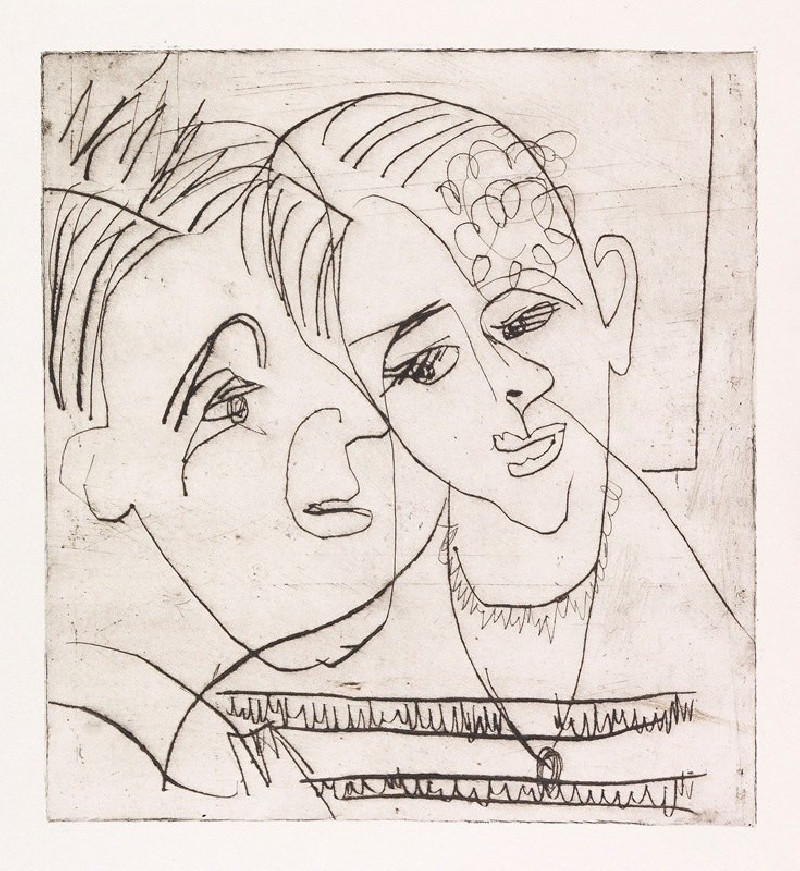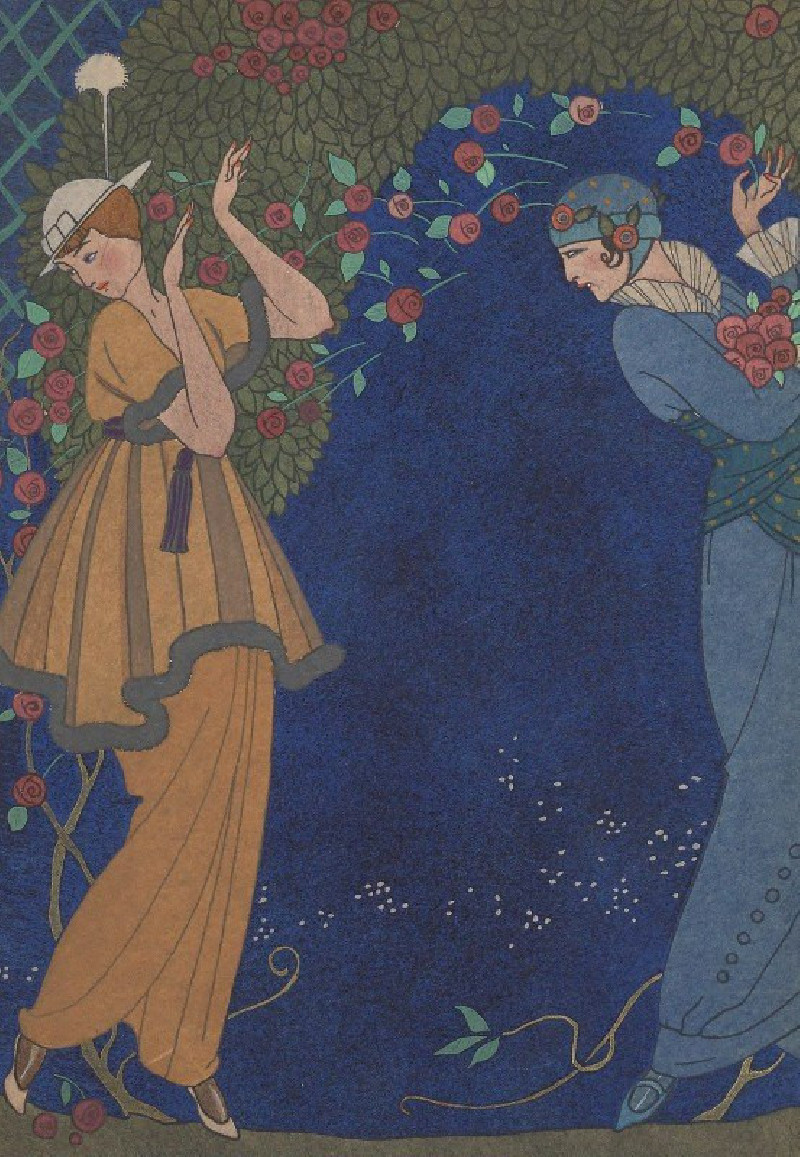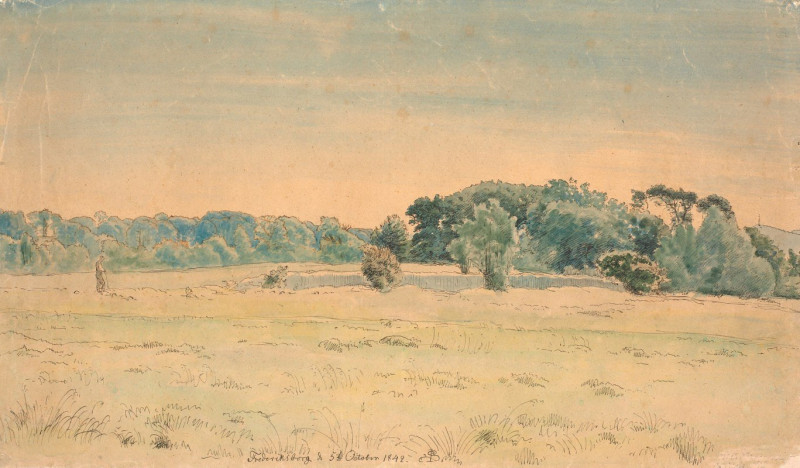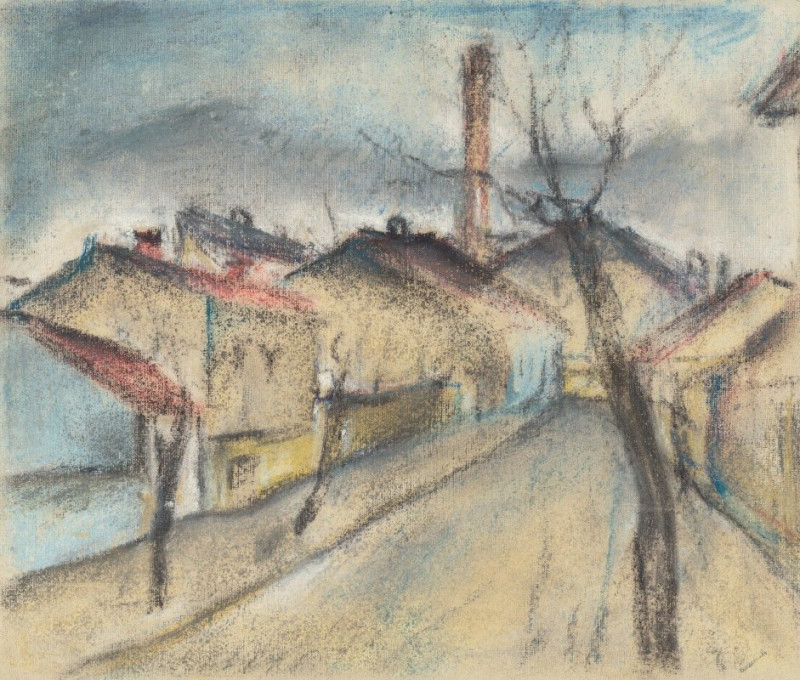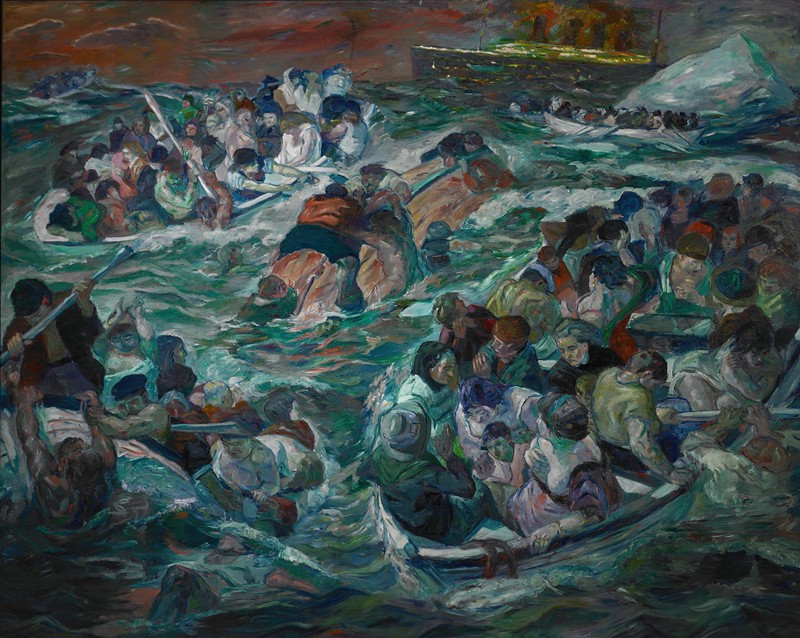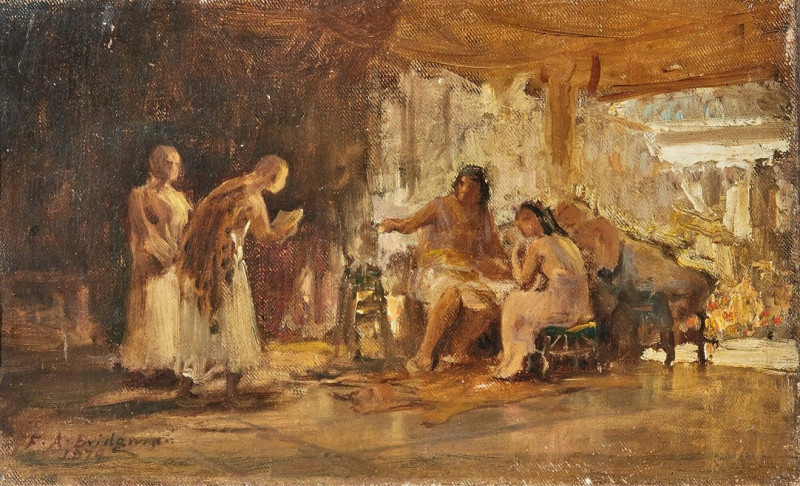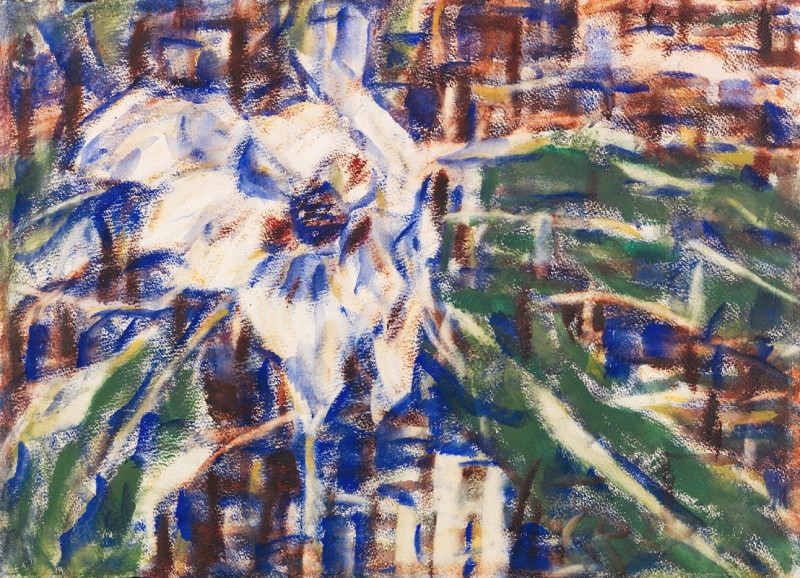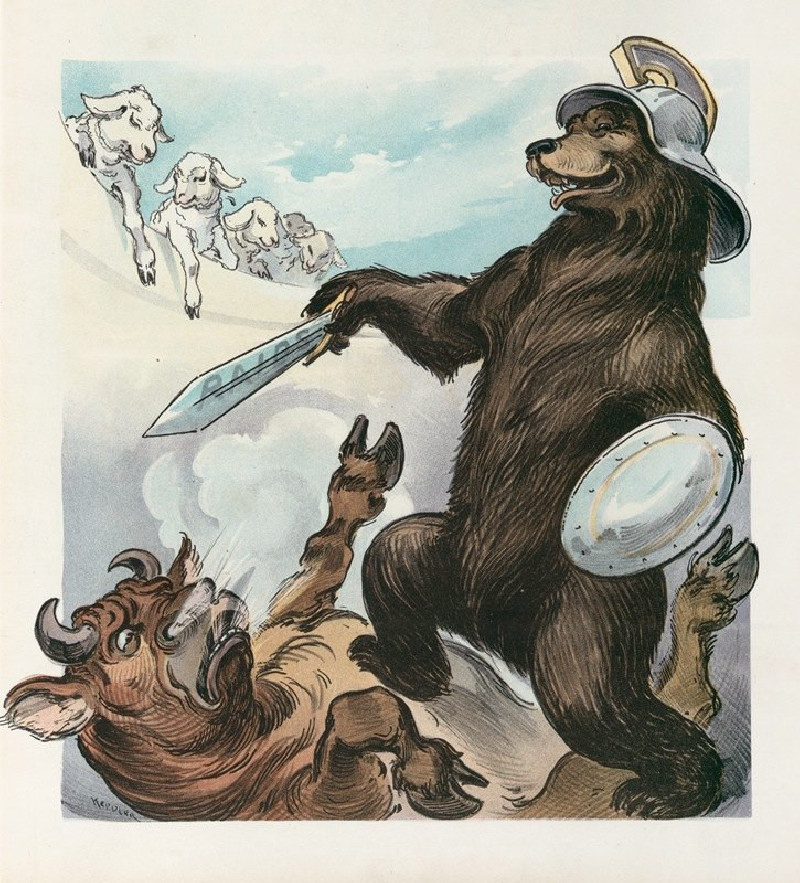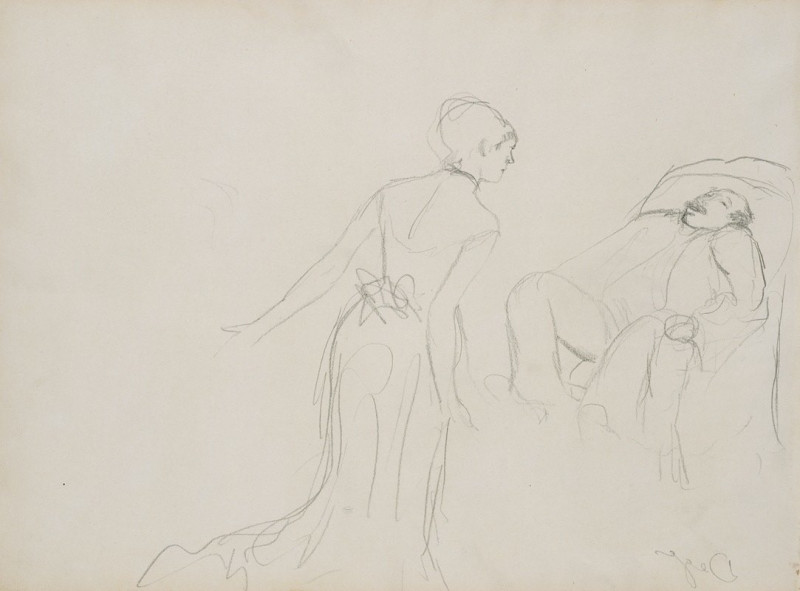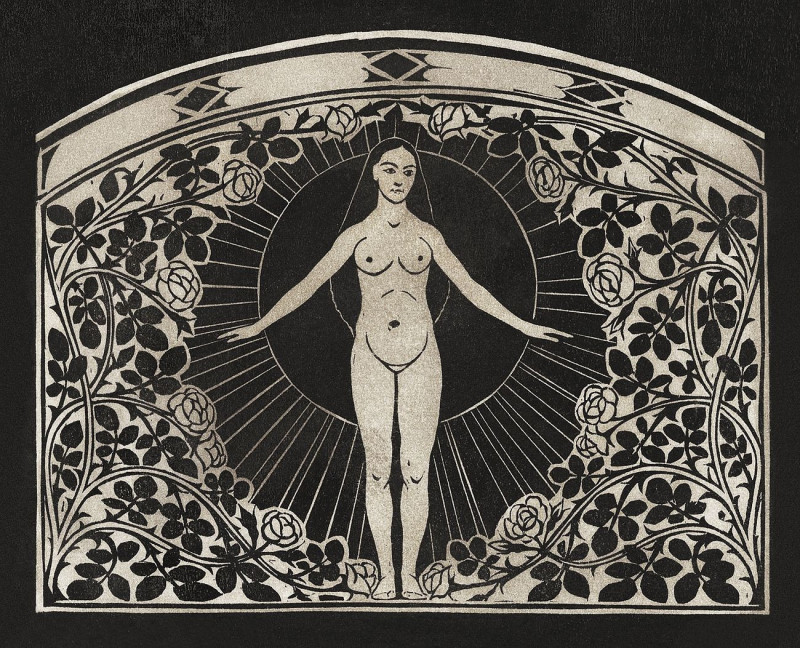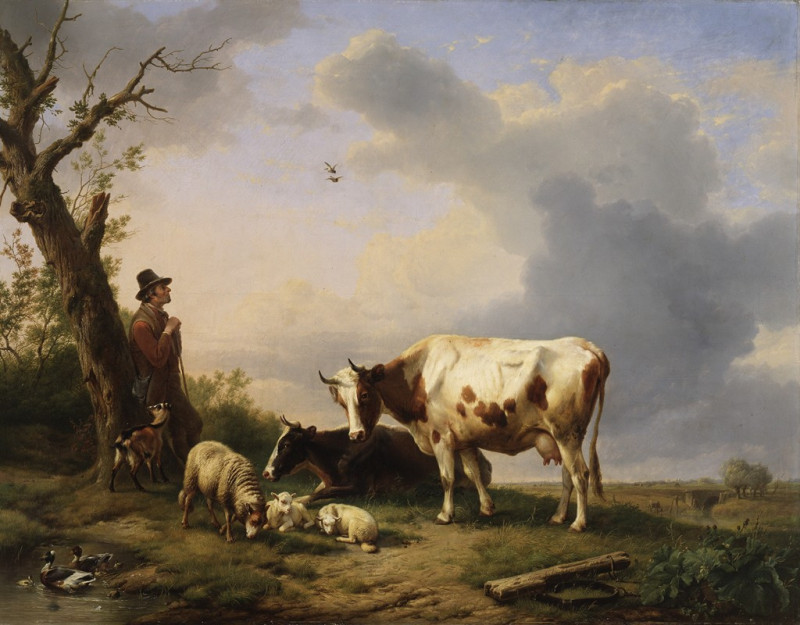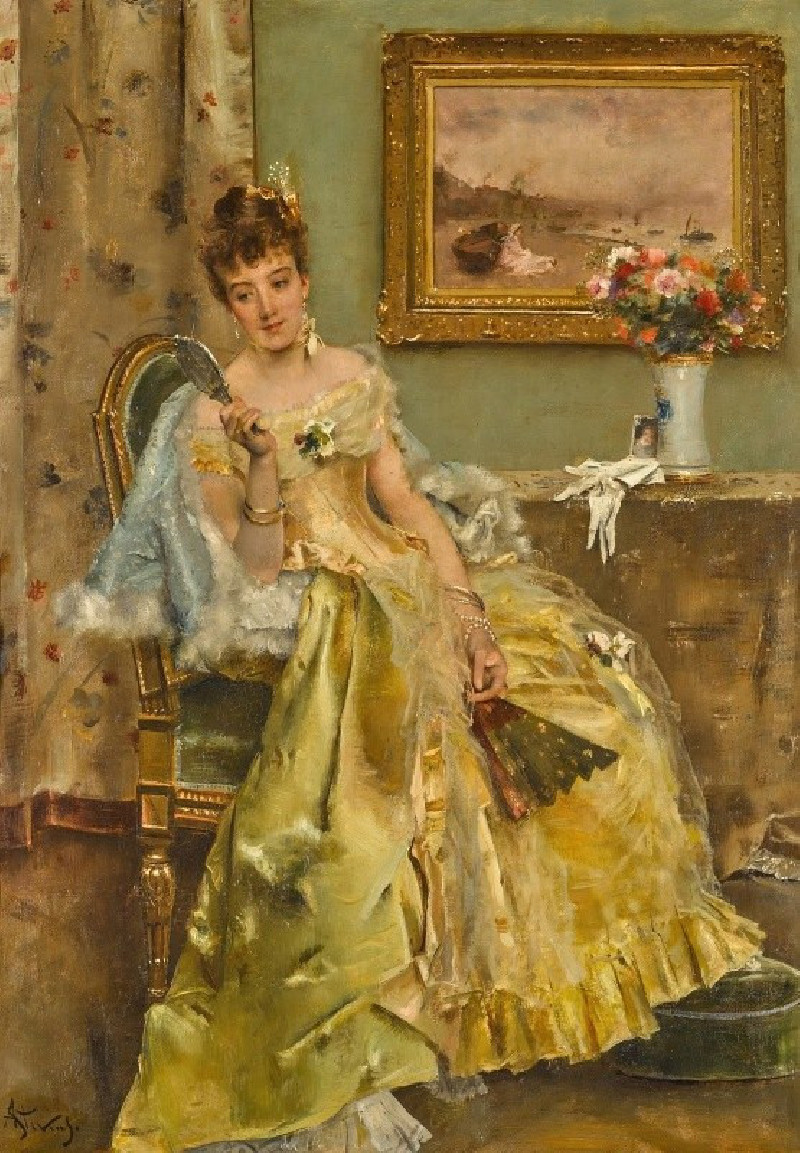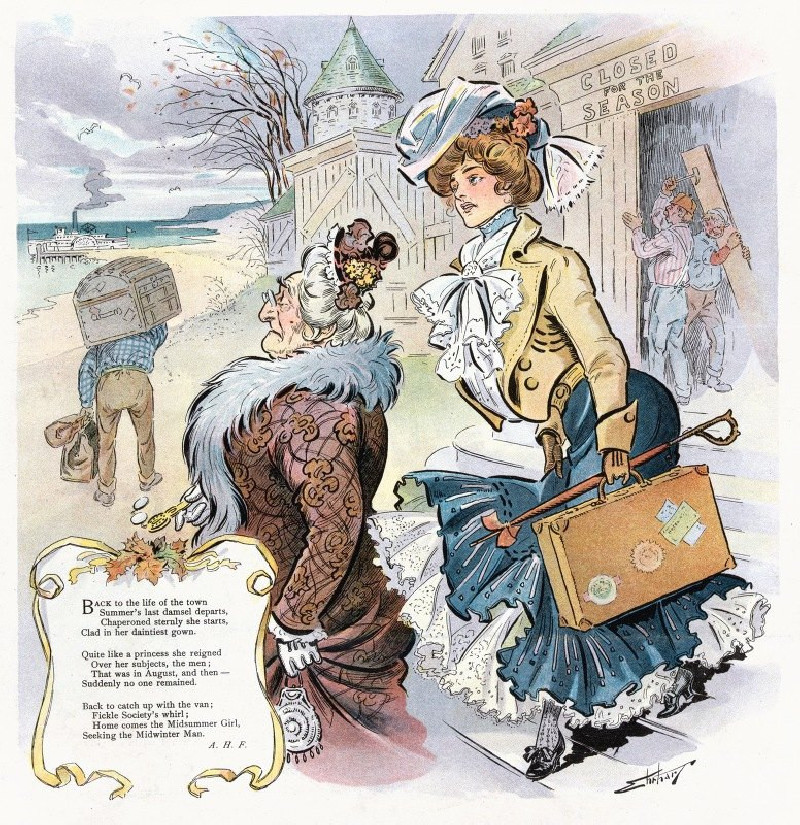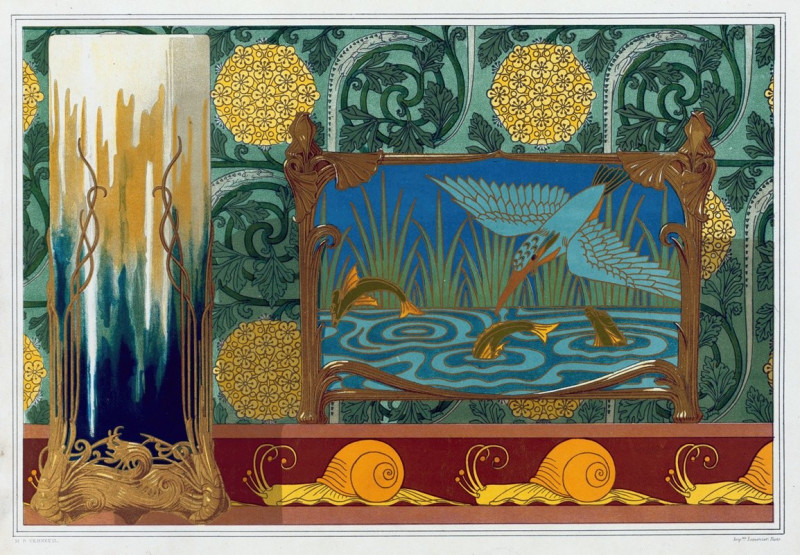Die Hembusse (1931)
Technique: Giclée quality print
Recommended by our customers
More about this artwork
Ernst Ludwig Kirchner's 1931 etching, "Die Hembusse," captivates viewers with its expressive lines and intriguing composition. This work highlights Kirchner's distinct style and his mastery in capturing the essence of his subjects through minimal yet impactful strokes.The painting features the close-up portrayal of two faces, sketched with bold, confident lines that delineate their features and expressions. The subjects appear to be engaged in an intimate moment, with their eyes gazing off the canvas, suggesting introspection or distant thoughts. The artwork’s simplicity is deceptive; a closer examination reveals a sophisticated interplay of emotions and personalities.Kirchner's use of line in "Die Hembusse" is particularly notable. The lines are not just structural but are charged with an emotional intensity that is typical of Kirchner’s work. The dynamic between the figures, coupled with their abstracted features, invites viewers to ponder the relationship depicted and the broader context of the scene.This etching is a quintessential example of Kirchner's contribution to modern art, particularly within Expressionism, where the focus is often on the representation of emotional experience rather than physical reality. "Die Hembusse" remains a profound study of human interaction and the complexities of expression, retaining its power and relevance nearly a century after its creation.
Delivery
Returns
Ernst Ludwig Kirchner (1880–1938) was one of the most important German Expressionist painters. He was a co-founder of Die Brücke, a group of German expressionist artists formed in Dresden in 1905. Die Brücke and Kirchner took inspiration from Vincent Van Gogh and Edvard Munch, as well as African and Oceanic art. They used woodblock printing as a medium to showcase their signature style: flat, unrealistic images with vivid colors. The recurring themes in Kirchner's artworks included exotic cultures, faraway landscapes, self-portraits, dancers and Berlin street life. His paintings and prints effectively portrayed non-European cultures despite the fact that he never traveled outside of Europe.

